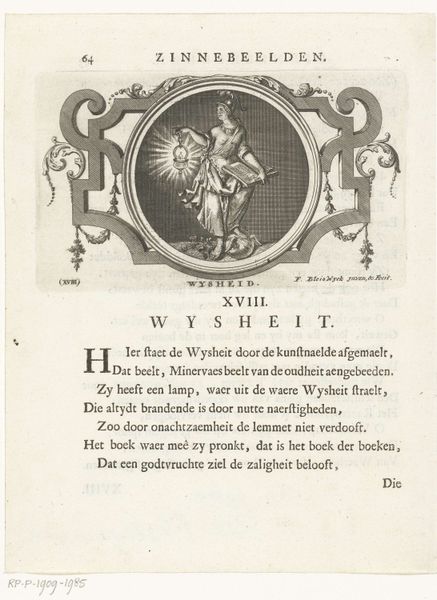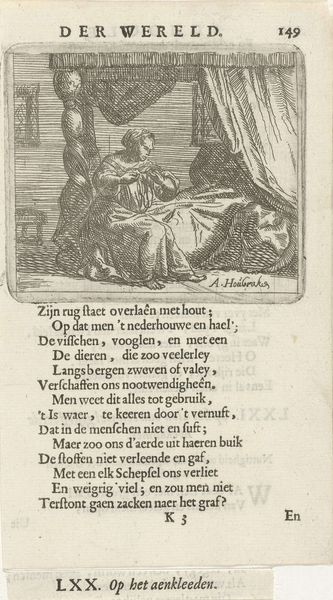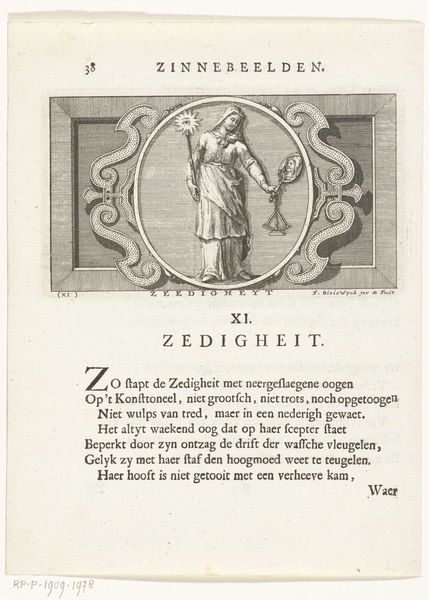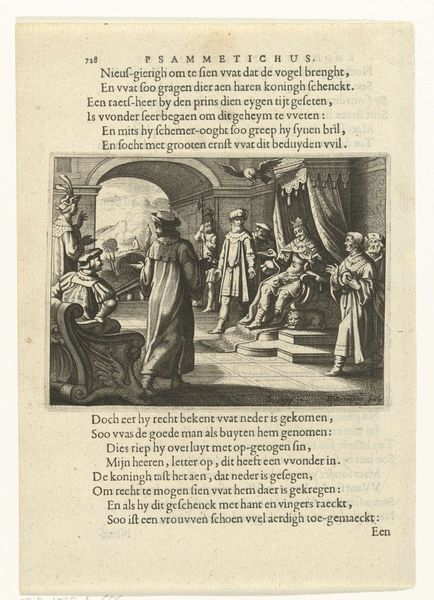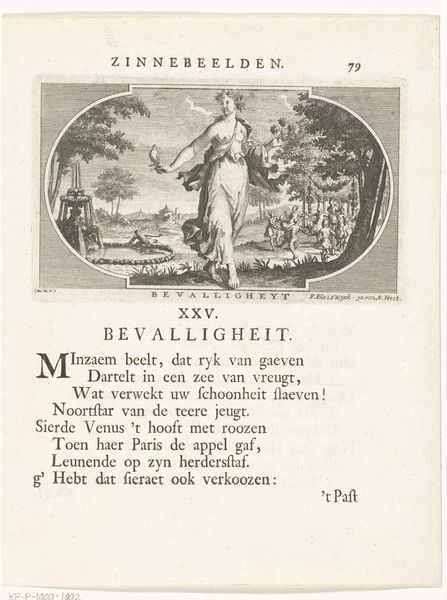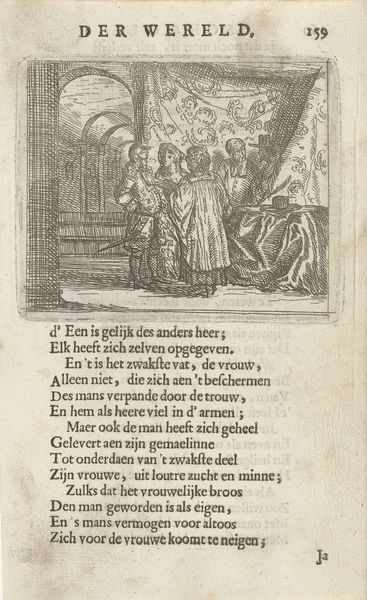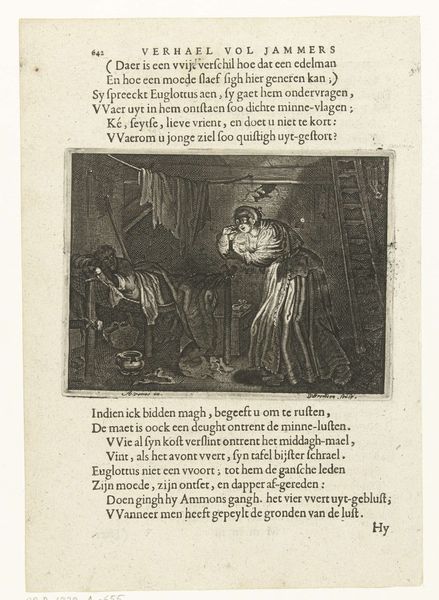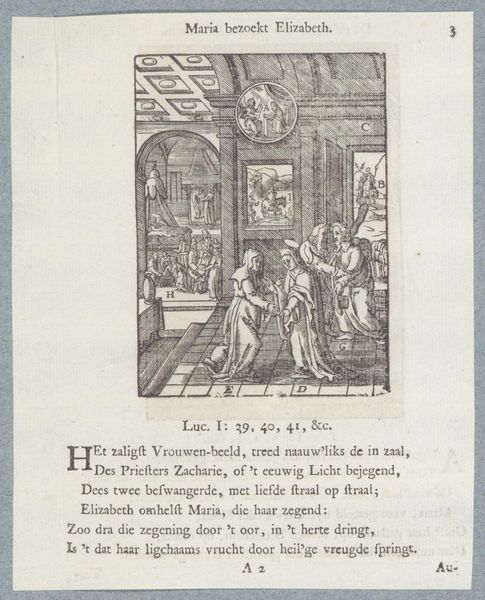
print, engraving
allegory
baroque
old engraving style
engraving
Dimensions: height 196 mm, width 150 mm, height 79 mm, width 129 mm
Copyright: Rijks Museum: Open Domain
Curator: Here we have a piece entitled "Emblem with allegory on the marriage", originating sometime between 1681 and 1737. It’s the work of François van Bleyswijck, presented in the form of an engraving. What strikes you first about its aesthetic, its visual presence? Editor: It's fascinating! The stark contrast really guides your eye. There’s almost a spotlight on the central figure because of the way the lines are etched. Though the subject seems simple, that starkness hints at something complex or even fraught. Curator: Indeed. During this era, particularly within Dutch emblem books, marriage was not merely a private affair. It had strong ties to civic and societal order. Engravings like this often served as moralizing tools, reinforcing particular social structures and expectations tied to family life. Look at the vignettes flanking the central figure – do they reveal aspects of that order? Editor: Definitely. On the left, the vignette suggests societal involvement in setting up a marriage, while on the right we seem to be seeing chaos and strife. Symbolically, there's that balance – the promise of stable foundations versus the danger of domestic discord, heightened perhaps by the central female figure’s almost stoic stance. The Baroque style serves well for this balance, emphasizing both drama and order simultaneously. Curator: Precisely. The objects strewn around her – the broken weapons, the olive branch – further underscore this precarious balance, conveying the notion that a successful marriage requires both strength and peace, and adherence to these norms meant stability for both the couple and society at large. The institution of marriage needed defending! Editor: So it seems it isn't simply a celebration of love, but more like an advertisement for commitment—even obligation. It reflects how a formal structure such as marriage helped underpin much larger social ambitions. Looking at it now I also can see some artful cross-hatching providing shading, giving dimension to a very serious-looking, staged engraving. It certainly is more about the 'state' of marriage, rather than intimate partnership! Curator: Absolutely. It makes one wonder about the lived realities of marriage during that time, and how this carefully constructed ideal measured up. Editor: Exactly. It really challenges our assumptions about how images and expectations around this concept were produced and perpetuated in the culture of the time. Thank you for this vision.
Comments
No comments
Be the first to comment and join the conversation on the ultimate creative platform.
